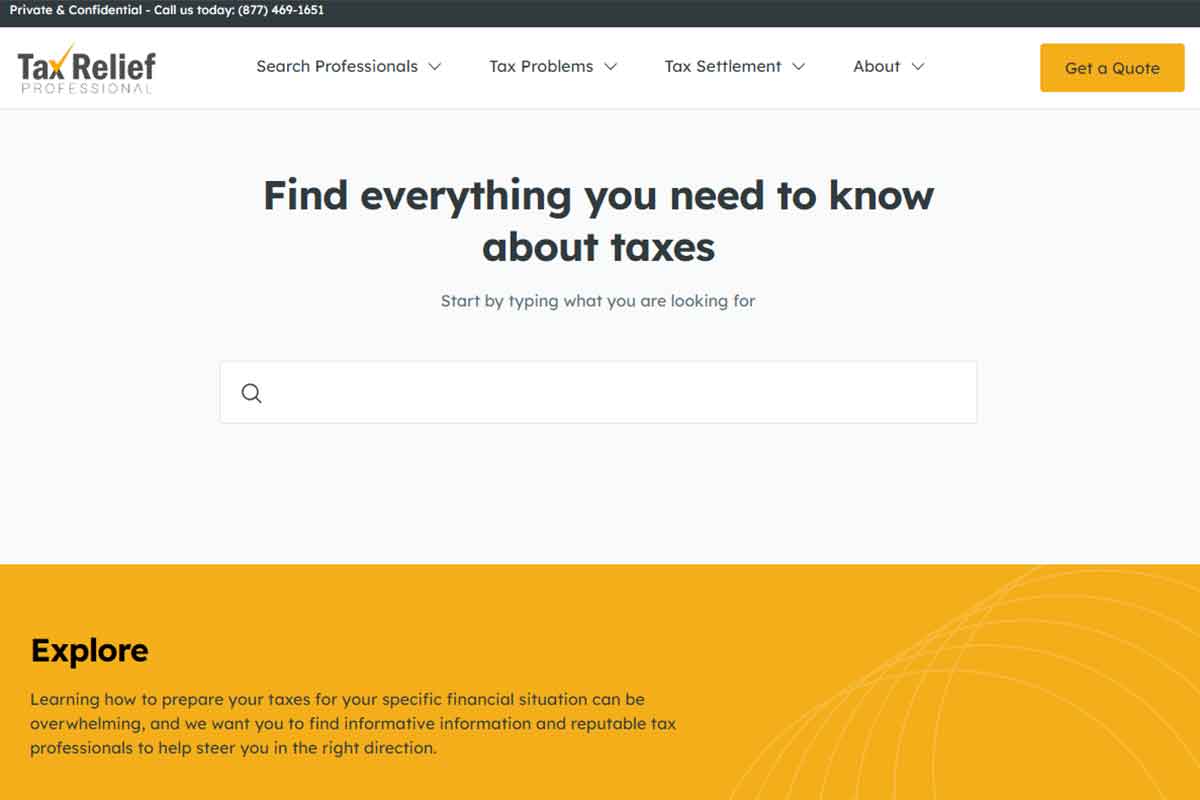Tax Settlement? Tax Relief? Which One is Right For You?


written by Drew O. Mark

reviewed by Mark Badkar
Tax settlement is a vague term, but one that people use often. One of the most common uses of the word “settlement” refers to lawsuits. When both parties come to an agreement before the trial, it’s a settlement.
Similarly, a tax settlement is an agreement between the Internal Revenue Service (IRS) and the taxpayer to resolve back tax debt. The IRS offers multiple ways to reach a settlement. However, they designed them for people with severe financial hardships.
The trick is to anticipate what the IRS perceives as a financial hardship. They review and decide on each case individually. While some hardships are obviously in need of debt forgiveness, the need in other cases aren’t as clear.
Although, not all IRS programs offer tax settlement, many do achieve meaningful relief for the taxpayer. What’s the difference between tax settlement and tax relief? We’ll explain.
What is Tax Settlement?
Tax settlement allows a select few taxpayers to resolve their whole tax debt for less than they owe. In other words, the taxpayer qualifies for a program that results in partial debt forgiveness.
Although settling your debt for “pennies on the dollar” is virtually unheard of, it is possible with the Offer in Compromise. This technical possibility is what the old ads on television were referring to.
The companies behind these ads generally listened to clients’ stories. After filling out the application with reported hardships, they’d submit it to the IRS. The IRS denied the majority of these applications.
The IRS offers very few qualification guidelines for these applications. They only approve applications for especially severe hardships.
What is Tax Relief?
The IRS reserves tax settlement for very few taxpayers. On the other hand, tax relief is accessible to most taxpayers. Examples of tax relief include a filing deadline extension, monthly installment plan, and first-time penalty abatement.
The IRS announced the Fresh Start Program in 2008. The Fresh Start Program was a collection of relief programs.
About four years later, the IRS revamped and improved the program. They announced the changes as the Fresh Start Initiative and they’re still available today.
According to the IRS, these changes include the following:
- Increased minimum tax debt at which the IRS generally issues leans. This has resulted in fewer IRS liens.
- Made it easier to for the IRS to remove liens after debt repayment.
- Lien withdrawal removal is available after developing an installment agreement
- Made it easier for small struggling businesses to get installment agreements.
- Made it easier for taxpayers to achieve an offer in compromise.
“These steps are in the best interest of both taxpayers and the tax system. People will have a better chance to stay current on their taxes and keep their financial house in order. We all benefit when that happens.”
Doug Shulman, IRS Commissioner
Other forms of tax relief include:
- Wage garnishment removal
- Bank levy removal
- Tax lien removal
- Injured or innocent spouse relief

Should I Apply for Tax Settlement or Tax Relief?
Tax relief is for taxpayers who need a break until they can get back on their feet. Tax settlement is for people who are in such deep tax debt, they may never pay it all back. That means that the IRS doubts the overall collectability of the debt.
“Doubt as to collectability exists in any case where the taxpayer’s assets and income are less than the full amount of the tax liability,” says the IRS. In other words, you have no assets and not enough income to make adequate monthly payments.
Furthermore, the application for an offer in compromise must be the last resort. The IRS will decline offers in compromise for taxpayers who haven’t explored other payment options. Lastly, tax return filings must be up to date.
If you’re not sure how the IRS will classify your case, contact a tax relief professional. If you send in an application and the IRS declines it, you can lose money.
To begin with, they keep your non-refundable $186 application fee. Then, they apply payments they receive with your application to your tax debt. An offer in compromise denial leaves you back at square one.
In contrast, taxpayers who are behind on taxes may find that the IRS started garnishing their wages or levied their bank account. Garnishments and levies remain in place until the balance of the debt is at zero.
These collection efforts cause a significant disruption in the lives of taxpayers. However, the IRS offers temporary relief, usually in exchange for an installment agreement.
Do I Need a Tax Relief Professional?
Reputable and experienced tax professionals can help you decide which program will benefit you the most. Additionally, he or she can maximize your potential for achieving a tax settlement, if that’s the route you choose.
If you have more questions, use our directory to find a good tax professional near you. Gather information to share your case and consider his or her strategy for resolving your back-tax debt.









